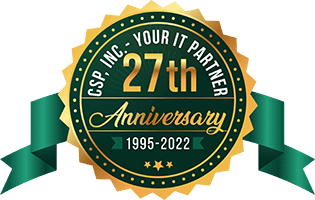1310 Nowell Road
Raleigh, NC 27607
1310 Nowell Road
Raleigh, NC 27607
Existing CSP Client: (919) 424-2060
SALES: (919) 420-3231
Are you a LastPass user? Find out what the recent breach means for the security of your passwords.

Did you hear? In late 2022, password manager service provider LastPass disclosed a major breach of customer information.
Even though this breach did not give the hacker direct access to passwords in detail, they did manage to steal a great deal of user data. That’s why LastPass users need to understand the details of the breach, what it means for their security, and what steps they need to take right away to mitigate the effects of the incident.
According to LastPass’s report on the breach:
“Based on our investigation to date, we have learned that an unknown threat actor accessed a cloud-based storage environment leveraging information obtained from the incident we previously disclosed in August of 2022. While no customer data was accessed during the August 2022 incident, some source code and technical information were stolen from our development environment and used to target another employee, obtaining credentials and keys which were used to access and decrypt some storage volumes within the cloud-based storage service. “
In other words, the full extent of the damage caused by an initial security incident in August 2022 has now been realized. A hacker gained access to key internal code and technical information, targeted LastPass again, and then gained access to user information.
The one silver lining in this incident is that customer password vaults are stored in a “proprietary binary format”, which is partially encrypted. That means these passwords are still not immediately accessible by the hacker and require the customer’s master password to unlock.
However, the hacker may have means of getting around this final layer of security. They may be able to employ brute force methods to guess the user’s master password and then decrypt the vault data they stole.
This breach largely compromises your security as a LastPass user. The hacker may have all the information they need to begin either brute-force hacking your master password, or phishing you as a target to gather further information.
All that stands between the hacker and your vault full of passwords is your master password. If it is not secure, or if you fall for a phishing scam, you may compromise your entire list of passwords.
Your most pressing course of action is to immediately update your master password. Make sure to follow the best practices for creating a strong password:
Ready to put your password to the test?
It’s one thing to skim over a list of common password mistakes and assume you’re probably still OK. Sure, maybe that one password is based on your pet’s name, or maybe that other password doesn’t have any capitals or numbers—what’s the big deal, really?
If you’re so confident, then why not put it to the test?
Click here to test how secure your password is—take a few minutes and try a few.
2FA requires the user to utilize two methods to confirm that they are the rightful account owner.
With a 2FA solution, you can enroll new employee devices in minutes, given that there’s no need to install an endpoint agent.
>Here’s how it works:
Essentially, with 2FA enabled, the hacker will need more than your master password to access your vault; they would also need access to your smartphone. It’s an essential and highly-secure second layer of security.
Despite the fact that passwords are the most direct way to access a user’s private information, most passwords in use today are not considered to be strong or complex enough—and even if they are, they aren’t updated often enough.
In fact, 90% of users have 50 or more online accounts, many of which rely on weak and shared passwords.
Different sites, apps, and programs have different requirements for what your password needs to have—minimum character length, capitalization, numbers, and symbols being the most common.
The idea here being the more complex a password is, the harder it is for a hacker to crack it. This can be difficult to maintain—but it’s vitally important that you manage it…
Passwords protect email accounts, banking information, private documents, administrator rights and more—and yet, user after user continues to make critical errors when it comes to choosing, protecting and managing their passwords.
The primary lesson to learn here is that no security system is 100% foolproof. Even cybersecurity giants like LastPass will get hit from time to time.
It’s up to users like you to stay up to date on incidents like this, and act fast to update passwords and maintain personal security.

Always at your service to provide the highest level of quality support to our customers.

Anthony Firth Client Engineer

“I’m passionate about building and fostering relationships, and finding solutions for success.”

Michael Koenig Client Account Manager

“I help clients stabilize and grow their IT infrastructure so they can focus on growing their core business.”

Josh Wilshire Systems Engineer Team Lead

“I strive to provide the highest level of quality service to our customers.”

Tommy Williams Sr. Hardware Engineer

“I’m driven by the steadfast belief that technology must serve as a business enabler. This mantra has driven 21
Years of successful partnerships.”

Stephen Riddick VP Sales & Marketing

“CSP doesn’t succeed unless your company succeeds.”

Stephen Allen Inventory Manager

“Through my intuition and genuine concern to help others I have built long-lasting relationships with our customers, co-workers and business partners.”

Scott Forbes VP Support Services

“Every day, I work with clients to help plan the future of their businesses.”

Michael Bowman vCIO

“Your IT problems become our IT solutions.”

Mark McLemore Project Engineer

“Managing internal and external operations to ensure that CSP provides quality and reliable customer service .”

Margie Figueroa Business Manager

“Providing quality internal and externals financial support to our customers and accounting support to CSP.”

Katie Steiglitz Accounting Administrator

“Some call me the CEO. I call myself the Cheerleader for an awesome team!”

William B. Riddick Founder & CEO

“CSP is here to assist you with your IT needs.”

Beth Wylie Inside Sales Manager




On What Questions You Need To Ask Before Signing Any Agreement.
"*" indicates required fields

Raleigh IT Support Company and IT Services Provider | CSP Inc.
1310 Nowell Rd,
Raleigh, NC 27607
Existing CSP Client: (919) 424-2060
SALES: (919) 420-3231
Receive email updates and informative marketing materials by subscribing to our newsletter.
"*" indicates required fields